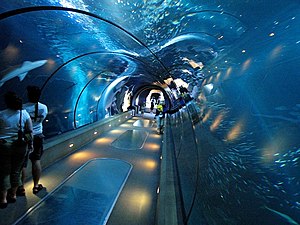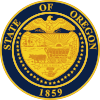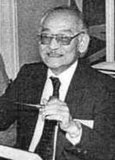Portal:Oregon
The Oregon Portal
Oregon (/ˈɒrɪɡən, -ɡɒn/ ⓘ ORR-ih-ghən, -gon) is a state in the Pacific Northwest region of the United States. Oregon is a part of the Western United States, with the Columbia River delineating much of Oregon's northern boundary with Washington, while the Snake River delineates much of its eastern boundary with Idaho. The 42° north parallel delineates the southern boundary with California and Nevada. The western boundary is formed by the Pacific Ocean. Oregon has been home to many indigenous nations for thousands of years. The first European traders, explorers, and settlers began exploring what is now Oregon's Pacific coast in the early to mid-16th century. As early as 1564, the Spanish began sending vessels northeast from the Philippines, riding the Kuroshio Current in a sweeping circular route across the northern part of the Pacific. In 1592, Juan de Fuca undertook detailed mapping and studies of ocean currents in the Pacific Northwest, including the Oregon coast as well as the strait now bearing his name. The Lewis and Clark Expedition traversed Oregon in the early 1800s, and the first permanent European settlements in Oregon were established by fur trappers and traders. In 1843, an autonomous government was formed in the Oregon Country, and the Oregon Territory was created in 1848. Oregon became the 33rd state of the U.S. on February 14, 1859. Today, with 4.2 million people over 98,000 square miles (250,000 km2), Oregon is the ninth largest and 27th most populous U.S. state. The capital, Salem, is the third-most populous city in Oregon, with 175,535 residents. Portland, with 652,503, ranks as the 26th among U.S. cities. The Portland metropolitan area, which includes neighboring counties in Washington, is the 25th largest metro area in the nation, with a population of 2,512,859. Oregon is also one of the most geographically diverse states in the U.S., marked by volcanoes, abundant bodies of water, dense evergreen and mixed forests, as well as high deserts and semi-arid shrublands. At 11,249 feet (3,429 m), Mount Hood is the state's highest point. Oregon's only national park, Crater Lake National Park, comprises the caldera surrounding Crater Lake, the deepest lake in the United States. The state is also home to the single largest organism in the world, Armillaria ostoyae, a fungus that runs beneath 2,200 acres (8.9 km2) of the Malheur National Forest. (Full article...) Selected article -
U.S. Route 730 (US 730) is an east–west United States Highway, of which all but 6.08 miles of its 41.78 miles (9.78 of 67.24 km) are within the state of Oregon. The highway starts in rural Morrow County in Eastern Oregon at an interchange with Interstate 84 (I-84) and US 30, located east of the city of Boardman. US 730 travels east along the Columbia River as a continuation of Columbia River Highway No. 2 into Umatilla County, intersecting I-82 and US 395 in the city of Umatilla. US 730 and US 395 form a short concurrency within the city before the highways part, with US 730 continuing northeast into Washington. The highway travels through rural Walla Walla County and ends at an intersection with US 12 south of Wallula. US 730 was created with the original United States Highways on November 11, 1926, traveling on the existing Columbia River Highway, established in 1917, from US 30 in Umatilla to US 410 south of Wallula. The Washington section of US 730 was added to the state highway system in 1923 as a branch of State Road 3, later becoming a branch of Primary State Highway 3 (PSH 3) in 1937. The highway was concurrent with US 395 from 1937 until 1985, traveling from Cold Springs Junction to US 410. US 30 was moved to a new route bypassing Umatilla and Irrigon in 1946, allowing for US 730 to be extended southwest to Boardman, later to an interchange with I-84.
Selected biography -
Minoru "Min" Yasui (October 19, 1916 – November 12, 1986) was a Japanese-American lawyer from Oregon. Born in Hood River, Oregon, in the Columbia River Gorge, he earned both an undergraduate degree and his law degree at the University of Oregon in the 1930s. He was one of the few Japanese Americans after the bombing of Pearl Harbor who fought the laws that directly targeted Japanese Americans or Japanese immigrants. His case was the first case to test the constitutionality of the curfews targeted at minority groups. His case would make its way from the United States District Court for the District of Oregon to the United States Supreme Court, where his conviction for breaking the military imposed curfew was affirmed. His case Yasui v. United States, was a companion case to Hirabayashi v. United States. After internment during most of World War II, he moved to Denver, Colorado in 1944. In 1945, Yasui married, and with his wife raised three daughters. In Denver, he became a local leader in civic affairs, including leadership positions in the Japanese American Citizens League. In 1986, his criminal conviction was overturned by the federal court in Oregon.
In this month
More did you know -
Did you know (auto-generated) -
General images -The following are images from various Oregon-related articles on Wikipedia.
Selected image - The Oregon Coast Aquarium is an aquarium in Newport, Oregon. It is perhaps best known for having housed Keiko, the orca from the movie Free Willy, from January 1996 until 9 September 1998, when he was shipped to Vestmannaeyjar, Iceland. Even without its former star attraction, USA Today and Coastal Living Online have ranked the Oregon Coast Aquarium among the top ten aquariums in the United States. Selected quote -Selected panorama - The skyline of downtown Portland, Oregon. Taken from the east waterfront.
Main topics | ||||||||||
















